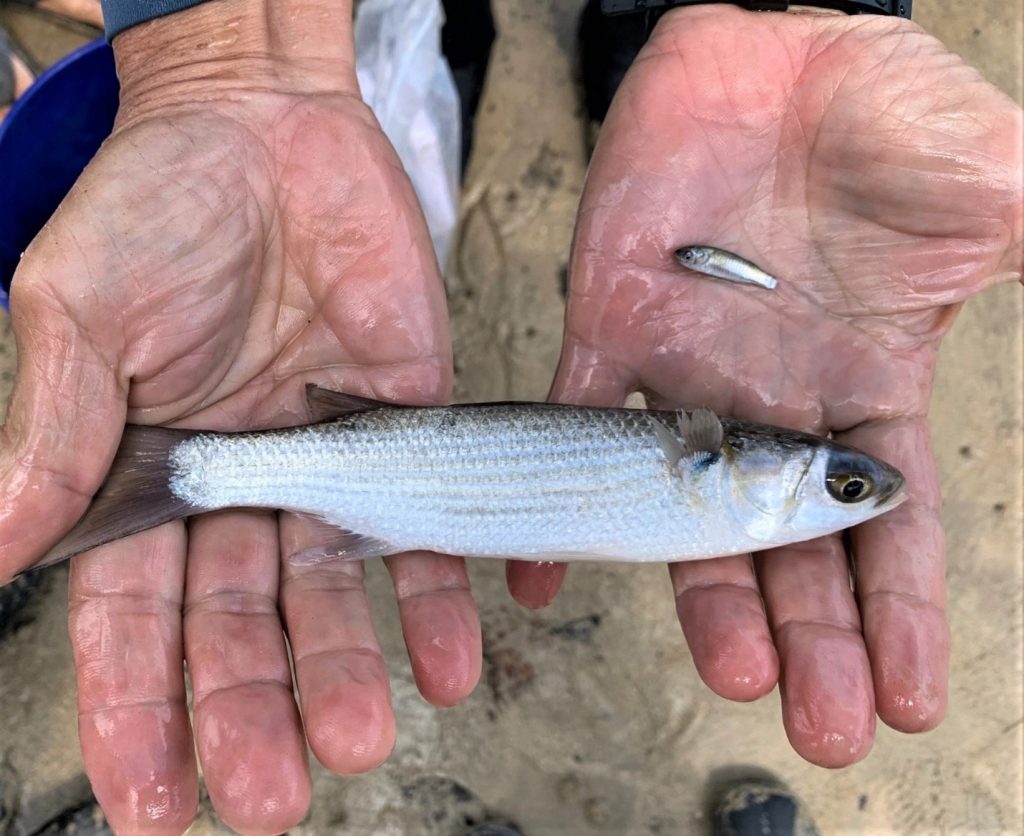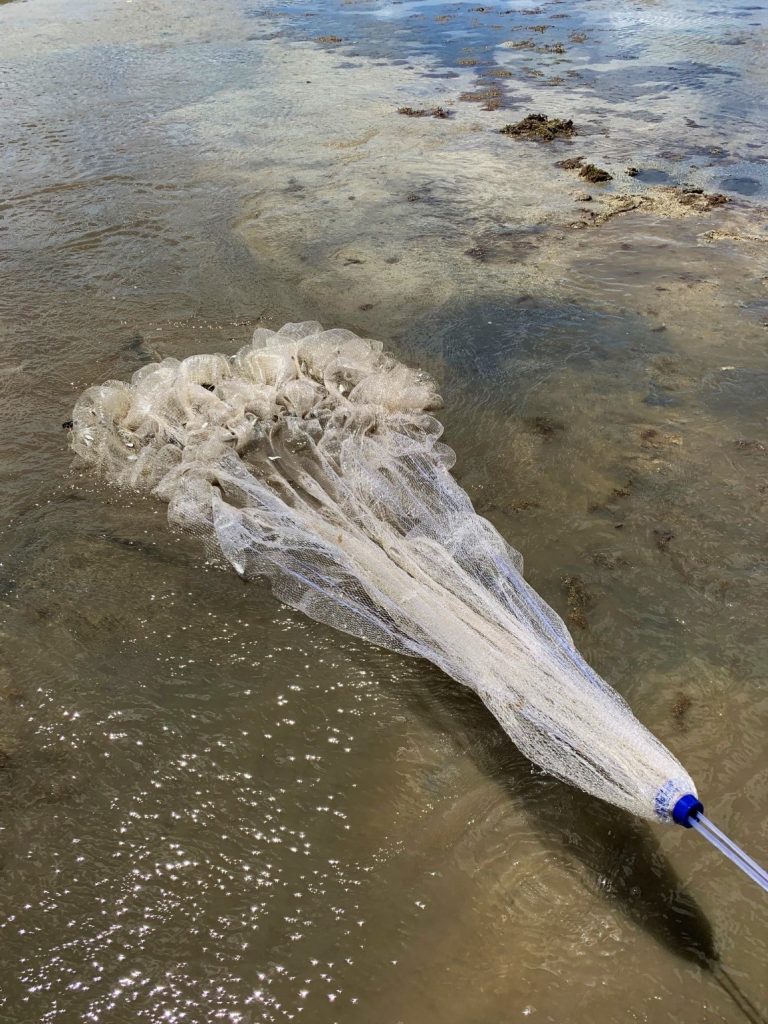4/13/23 – Are wet winters beneficial for fish recruitment?
Authors: Kim Peyton, Troy Sakihara, Troy Shimoda
While conducting our routine monitoring at Paikō Lagoon Wildlife Sanctuary in Kuli‘ou‘ou (East Oʻahu) last week DAR Estuaries recorded a remarkably large settlement of juvenile ‘amaʻama (Striped mullet Mugil cephalus). Most ‘amaʻama were a bit more than 1 inch long, only weighing around 0.02 ounces (0.5 grams), half the weight of a paperclip.
Four times per year at 13 locations throughout Kaua‘i, Oʻahu, Maui, and Hawaiʻi Island DAR’s Estuary Team conducts monitoring surveys for fish that use estuaries (muliwai). From one year to the next our methods are consistent allowing DAR Estuaries to accumulate long-term data at each of these important locations. For this reason, we can detect periods when fish recruitment is particularly strong, many of which are highly prized food and sport fish, and link this with environmental conditions.
Are wet winters beneficial for fish recruitment? Rain not only recharges our groundwater; periods of wet weather also result in more freshwater entering coastal areas. Estuaries expand in size whenever freshwater inflow increases. You can think of freshwater floating on top of heavier saltwater as a signal that expands and contracts with changes in freshwater inflow. When the freshwater signal is strong, larval fish moving in ocean currents offshore can detect this freshwater and then follow it inshore to reach an estuary. Estuaries are where many larval fish settle out of the water column as they transition to their juvenile stage.
With all the rainfall we have been having this winter our estuaries are expanding and fish recruits, like ‘amaʻama in Paikō Lagoon, are responding by settling out in above average numbers. Linking variable fish recruitment to environmental changes, driven by natural or anthropogenic factors, is why research and monitoring by DAR Estuaries is a critical part of effective fisheries management.
This work is funded by US Fish and Wildlife Service Sportfish Restoration program and the State of Hawai‘i.

Here DAR technician Rodney Young is comparing the new ‘amaʻama recruit to a larger juvenile, which weights close to 3 ounces. All fishes are identified by species, measured and quickly released.

DAR technician Neal Hazama launches a cast net in Paikō Lagoon with the beautiful valley of l Kuli‘ou‘ou in the background. Since 1981 Paikō Lagoon Wildlife Sanctuary has been managed by DOFAW as a feeding and resting site for waterbirds, including ae‘o (Himantopus mexicanus knudseni) and ʻaukuʻu (Nycticorax nycticorax hoactli). Paikō Lagoon is also an important lagoonal estuary for fish in East Honolulu.

The minus tide that day gave us perfect conditions to sample new fish recruits. The DAR Estuaries Team works quickly to identify and measure each fish so they can be returned to the estuary unharmed.
